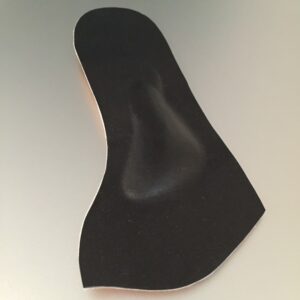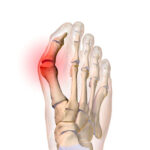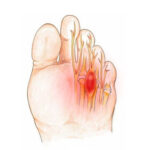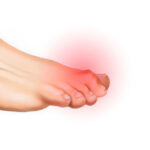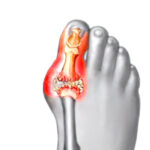Home » Pathologies » Forefoot surgery » Foot Lift
Foot Lift
A foot lift is used to reduce pain in the forefoot by injecting hyaluronic acid filler into the ball of the foot beneath the metatarsal heads.
This sort of pain is caused by the prolonged wearing of high heels. The injections can be given at the clinic under local anaesthetic.
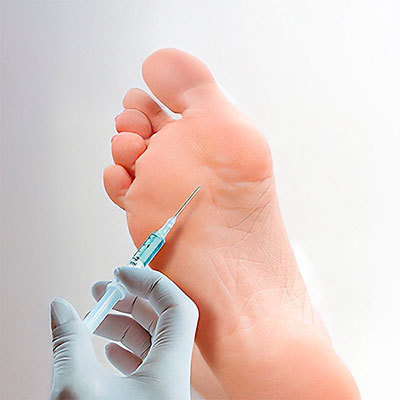
Description & Progression
Wearing high heels is known to cause severe pain in the forefoot. The pain often forces women take off their shoes during the day. However, some jobs require them to wear high heels all day long.
The pain on the sole of the foot is caused by placing too much pressure on the forefoot. When walking in flat-soled shoes, we strike the ground with our heel first, followed by the ball of the foot. This distributes our weight evenly across the foot and does not cause pain. However, when wearing high heels (10cm or higher), we walk almost entirely (90% of our body weight) on the front of the foot, specifically on the head of the second metatarsal bone.
This excessive local pressure gradually squashes the soft pad beneath the second metatarsal and leads to bursitis (painful inflammation) or even turf toe (sprained big toe). This puts the metatarsal bone is in direct contact with the ground, with nothing to cushion it but the epidermis. The pain gets worse, even when wearing smaller heels. Once the foot pad has worn away, the pain no longer spontaneously disappears but becomes a daily discomfort that can be highly disabling.
Treatment
Until a few years ago, the only treatment was orthopaedic insoles to limit the pain by absorbing some of the pressure on the metatarsal bone; however, this solution did not suit everyone with the condition. In fact, insoles are hard to use with high heels.
There is also the option of surgery to lift the metatarsal heads, but the procedure involves an osteotomy (controlled fracture) of the bones in order to raise them up and relieve the pressure on the ground. Recovery after the surgery is long and painful.
A Foot Lift has therefore been developed as an interim and above all reproducible solution, with no contraindications and no great risk of complications.
What is a Foot Lift?
A Foot Lift has been used in America for over a decade and in Europe for the past 5 years. Although not well known in France due to associations with cosmetic surgery (not covered by either Social Security or supplemental medical insurance), it is now becoming more popular.
It is extremely effective. Just one session can reduce the pain by over 90%. Highly cross-linked hyaluronic acid is injected between the epidermis and the bone in order to plump up the ball of the foot and cushion the pressure caused by the weight of the body on the metatarsal heads. The results last between 6 and 12 months, and the injections can be repeated as often as required.
During and after the procedure
Dr Lévy can perform the procedure at his clinic. It takes just 10–20 minutes for both feet. The surgeon gives a local anaesthetic at the injection site. In order to reduce any unpleasant feelings caused by the anaesthetic, an anaesthetic cream such as Emla can also be applied 2 hours before the procedure. The product (0.5mL per foot) is then injected into the ball of the foot using a syringe and a very thin needle. More specifically, the injection is made where the second metatarsal head presses on the floor. There will usually be a callus in this same spot, and pressing on it with the finger will cause familiar pain for the patient.
The injection is completely painless. The patient can walk again immediately without any real pain. There may be some discomfort for 24–48 hours (tingling, swelling, bruising). Heels should not be worn for 48 hours. Patients should wait 5 days after the injection before doing any sports.
The potential complications are injection and short-lived results.


